Automation in Companies

Companies are increasingly investing in automation technologies to streamline their processes and reduce operational costs. There are various types of automation tools that businesses can employ, depending on their needs and objectives.
Robotic Process Automation (RPA)
Robotic Process Automation is the most popular option for automating repetitive tasks, such as data entry, invoice processing, and customer service. RPA software uses pre-configured rules and algorithms to mimic human actions, thus freeing employees to focus on higher-value tasks.
Artificial Intelligence (AI) and Machine Learning (ML)
An automation platform can enable a business to automate complex decisions and predictions. These technologies are commonly used in areas such as demand forecasting, fraud detection, and personalized marketing. By analyzing large datasets, AI and ML algorithms can identify patterns and make data-driven decisions more efficiently than humans.
Internet of Things (IoT)
A key technology for business automation IoT devices can monitor and control various aspects of a business’s operations, from equipment maintenance, energy consumption and various other business processes. By analyzing real-time data, companies can optimize their business processes and reduce waste.
Additionally, chatbots and virtual assistants have become increasingly common in customer support and employee assistance. These tools use natural language processing and AI algorithms to process user requests and provide relevant information or assistance. As a result, businesses can cater to customer demands more efficiently and at all hours of the day.
In summary, automation technologies offer various benefits to companies, such as increased efficiency, lower costs, and improved decision-making. By implementing these tools strategically, businesses can optimize their operations and remain competitive in a rapidly evolving technological landscape.
Benefits of Business Automation

Increased Productivity
Business Automation leads to increased productivity, as tasks that previously required manual labor are now completed by machines or software. This frees up employees to focus on more complex, strategic tasks, ultimately increasing the overall efficiency of the company. Additionally, automation helps in reducing human errors, which can further contribute to increased productivity.
Cost Reduction
In the long run, business automation can lead to significant cost reduction for companies. Automated systems, once set up, often have lower operational costs than manual processes, as they require less human labor. Maintenance costs for automated systems may be more predictable than labor costs. Streamlining processes through automation also allows for better resource allocation, enabling companies to do more with less.
Improved Quality
Automated systems are consistent and precise, which results in improved quality of products and services. Since machines are not susceptible to human inconsistencies, companies can rely on business automation for providing a higher level of quality control. This not only benefits the end customer but also helps companies maintain a strong reputation for producing high-quality goods and services.
Enhanced Safety
By automating processes that involve repetitive or dangerous tasks, companies can significantly enhance the safety of their employees. Automation minimizes worker exposure to hazardous conditions, reducing the risk of accidents and costly lawsuits. Furthermore, automated systems can be designed with built-in safety features and can even help companies comply with regulatory safety standards more effectively.
Challenges and Risks of Business Automation

Job Displacement
Automation can lead to job displacement as companies shift their workforce needs to adopt new job applications. Workers in roles that become obsolete due to automation may struggle to find new employment opportunities, especially if their skills are not easily transferable. Companies should consider offering retraining programs to help affected employees transition to new roles within the organization.
Accuracy
While business automation can greatly increase efficiency, there is always a risk of errors or inaccuracies even in basic automation processes. Human intervention may still be necessary to monitor and correct mistakes in the automation software, and the consequences of errors can be costly.
Implementation Costs
Implementing business automation can be expensive, requiring significant upfront investment in technologies, infrastructure, and personnel. Smaller companies in particular may find it challenging to afford these costs. To maximize return on investment (ROI), organizations should carefully consider the long-term benefits and potential cost savings of business automation before committing to major initiatives. Generally, SaaS platforms combined with a business automation consultant, works out to be a practical and small business friendly pricing model as they charge on a monthly basis.
Data Security and Privacy
As business automation relies on data to function effectively, organizations must safeguard sensitive information from unauthorized access and misuse. Data breaches can result in financial losses, legal liabilities, and damage to a company’s reputation. Companies should invest in cybersecurity measures to protect their automated systems from attack and/or accidental exposure.
Continuous Improvement
Keeping up with advances in business automation technology can be challenging. Companies must be prepared to invest in ongoing training for employees and continual updates to their automated systems. Regular evaluations of business automation effectiveness and efficiency can help organizations identify areas for improvement and maintain a competitive edge in the market. This commitment to continuous improvement is necessary for businesses looking to reap the full benefits of automation.
Adoption and Integration Strategies

Change Management
Adopting business process automation requires a well-structured change management plan. It is essential to engage stakeholders, assess business needs, and establish a communication strategy. Some key steps to implement change management include:
- Identifying the scope and goals of automation
- Assessing risks and addressing concerns
- Assigning roles and responsibilities to team members
- Developing a timeline for implementation
- Tracking progress and adjusting the plan as necessary
Workforce Retraining
Successful automation integration allows employees to focus on higher-level tasks. As a consequence, workforce retraining becomes crucial to helping them adapt to the new technologies. A few essential steps for workforce retraining are:
- Identifying skill gaps and new roles required
- Creating tailored training programs
- Encouraging employees’ involvement by providing incentives
- Monitoring performance and providing feedback
- New hire and exit interview scheduling
Choosing Appropriate Solutions
Selecting the right automation technology is essential for achieving maximum efficiency. In the process of choosing appropriate solutions, companies should:
- Define clear objectives for the automation project
- Research various automation tools and their capabilities
- Analyze the company’s current processes and systems
- Consult with industry experts and peers
- Evaluate the compatibility and scalability of the chosen solution.
By following these guidelines, companies can create an effective strategy for the adoption and integration of automation technologies.
AI in Automation

AI has been making its way into various sectors and industries. It has become synonymous with the term “business automation” in the last year. AI allows companies to streamline processes, enhance decision-making, and create smarter systems, leading to higher efficiency and productivity.
Popular Use Cases
Product Manufacturing
AI-powered automation has transformed the manufacturing industry, enabling more precise and efficient production. AI algorithms help optimize assembly lines, automate quality control, and manage machinery through predictive maintenance. With generative AI, companies also automate new product ideas.
Customer Support
AI applications like chatbots and virtual assistants have revolutionized customer service by automating responses and providing personalized interactions. These technologies can handle high volumes of customer queries, resulting in quick resolutions and improved customer satisfaction.
Data Analysis
AI-enhanced automation tools have made data analysis faster and more accurate. They can process vast amounts of information in a short amount of time, making it easier for businesses to understand customer behavior, identify trends, and make data-driven decisions.
Supply Chain Management
AI-driven automation has improved supply chain management by analyzing data and providing insights to optimize logistics, inventory management, and demand forecasting. As a result, companies can reduce costs, minimize waste, and enhance the overall efficiency of their supply chain operations.
AI in automation has undoubtedly changed the way companies conduct business. Implementing such systems allows organizations to focus on their core competencies while improving operational effectiveness and providing visibility to relevant stakeholders. By incorporating AI-driven business automation into their processes, a business can operate more efficiently and competitively in the market.
Automation Platforms

Automation platforms have become crucial elements in today’s business landscape especially to gain access to new markets. These platforms offer efficient ways to automate repetitive tasks, allowing businesses to focus on high-level and creative initiatives. This section will focus on industry-specific automation platforms and highlight some of the popular platforms being utilized.
Industry Specific
In certain industries, specialized automation platforms have gained prominence, leveraging the unique requirements and nuances of their respective domains.
- Manufacturing: This industry has seen a significant shift towards robotic automation. Platforms such as Siemens Tecnomatix, and ABB Robotics help streamline various manufacturing processes and optimize the assembly line.
- Retail: Automation platforms such as Shopify, and RetailOps help businesses with inventory management, order processing, and customer relationship management, enabling them to enhance customer experience and optimize their business workflows.
- Healthcare: Specifically designed platforms like Cerner and Allscripts cater to the healthcare industry, handling tasks such as electronic medical record management, patient scheduling, and billing.
- Finance: The financial sector has seen the rise of automation platforms such as UiPath and Blue Prism, which cater to automation of tasks like loan processing, fraud detection, and customer service.
One of the popular platforms used in automation is Zapier, which offers seamless integration across a wide range of software applications.
By selecting the right automation platform for a specific industry, businesses can significantly improve their efficiency, reduce human error, and create a more agile work environment. Utilizing these platforms also allows businesses to capitalize on the expertise and knowledge embedded in these tools, ensuring that they remain competitive and adaptive in a constantly evolving marketplace.
In-House vs Outsource

Hiring Talent
Companies striving to develop automation tools may choose to hire in-house talent or outsource the project to a specialized vendor. In-house talent offers the advantage of familiarity with the company’s processes and needs. Building a team of experts ensures a dedicated focus on the project, addressing issues from within the organization as they arise.
- Advantage: In-house talent can bring a deep understanding of the company’s values and culture.
- Disadvantage: Recruiting and retaining top talent can be time-consuming and costly.
Selecting a Vendor
On the other hand, outsourcing automation projects to a vendor allows companies to leverage the experience and capabilities of external experts. Vendors have a proven track record of delivering results across various industries, which adds value to the project and reduces time to market significantly.
Pros
- Access to domain-specific expertise
- Reduced time to market
- Cost-effectiveness
Cons
- Less control over the development process
- Potential for miscommunication
- Lack of in-depth understanding of the company
In conclusion, both in-house and outsourced approaches have their merits. A business must weigh the pros and cons based on factors such as budget, time constraints, and the complexity of the project. By evaluating these factors, organizations can make informed decisions on the optimal path for their automation initiatives.
Small Business Process Automation Solutions

Free tools like ChatGPT and Bard, have empowered the average small business owners to optimize core business processes and increase efficiency. Some basic automation ideas that every small business owner can apply today are:
Marketing Activities
Small companies (less than 50 employees) generally have a single department responsible for all marketing efforts. With AI and a good marketing automation platform, a business can augment their marketing team by automating business processes like lead nurturing, lead scoring, email marketing automation, data capture and cleaning up the client distribution list. You can also automate social media marketing efforts by using schedule intelligent automation to post on social networks and collate all response in a single dashboard.
Sales Process
Business Process Automation Tools allow sales reps to spend more time with customers than manual tasks like quotes and order management. A sales rep can use workflow automation to identify a potential customer as well as on-board a new customer. Your sales team will be able to automate customer information automatically matched to previous records and even send post sales customer satisfaction surveys.
Phone Calls & Meetings
Handle incoming phone calls with automated messages and integrate with your business automation software. Attend meetings with an AI automation software that records and transcribes the meeting without needing to take notes every again. Sales teams have become faster in sending quotes and bringing in new customers as they are able to automate repetitive tasks
Human Resources
Almost all HR Tasks involved in a hiring process, can be accelerated right from candidate identification, interview scheduling, payroll management and various repetitive tasks that involved manual processes to check, eliminate and hire. Hiring can become an automated process by matching skills, budget and other parameters to help the human resources team become more efficient and reduce data errors.
Business Operations
All business automation tools optimize productivity in one way or another. Since the public use of A.I, business process management has become cheaper, faster and enables a small business to compete with large corporates as it reduces data errors, accelerates important tasks related to company growth.
Document Processing
Document automation software allow companies to scan, transcribe, reply and store documents following pre-defined process automation. Small Business Owners are able automate a business process by integrating their existing/legacy business software with business automation tools to increase productivity.
Frequently Asked Questions
How does automation improve efficiency in businesses?
An automation software can improve efficiency in businesses by streamlining processes, reducing redundancy, and increasing accuracy. It enables companies to complete tasks quicker and more accurately, freeing up employees’ time to focus on higher-value work. This efficiency can result in cost savings and increased productivity, ultimately leading to better outcomes and more competitive businesses.
What are common examples of business automation?
Some common examples of business automation in the workplace include:
Email and marketing automation
Customer relationship management (CRM) systems
Inventory management and order processing
Chatbots and customer service automation
Data analysis and reporting tools
Robotic process automation (RPA) and intelligent automation (IA)
Manufacturing and assembly line automation
Sales rep automation to manage customer orders
How do companies implement an automation software?
Companies can implement business automation in various ways, depending on their needs and resources. Some steps typically include:
Identifying tasks that can benefit from business automation, typically repetitive, routine, or time-consuming tasks
Evaluating different automation technologies and tools
Developing or customizing automation solutions to fit the company’s specific processes
Testing and refining the automation solution
Training employees to use and maintain the automated processes
Continuously monitoring and improving the solution’s performance
What are the potential drawbacks of business automation?
While automation offers numerous benefits, there can be potential drawbacks as well. These may include:
High upfront costs associated with purchasing and implementing automation solutions
Disruption during the transition period, as employees adjust to the new technology
Job displacement or loss for employees, particularly those in highly routine roles
Potential over-dependence on automated systems, which may be vulnerable to technology failures or cyberattacks
How can automation impact employee roles and job satisfaction?
Automation can impact employee roles by altering the nature of their daily tasks. In many cases, automation leads to the elimination of repetitive, manual work, allowing employees to focus on more strategic or creative tasks. This can result in increased job satisfaction as employees feel that their work is more meaningful and valuable.
What are the key benefits of adopting automation in a business?
Adopting automation in a business can provide several key benefits, including:
Increased efficiency and productivity
Improved accuracy and reduced errors
Cost savings due to decreased labor and manual work requirements
Enhanced customer experiences through faster service delivery
Freed up time for employees to focus on higher-value tasks
Greater scalability and ability to handle growth or fluctuations in demand
Why are many businesses operating without basic automation within their own organization?
Companies tend to take a long time in evaluate a suitable tech stack that has all the automation options they need to reduce machine labor, manual tasks, manual processes, human resources, marketing activities, customer experience, accounting and other business operations. At times a single business may need more than one tech stack to automate business processes to an optimum level.
